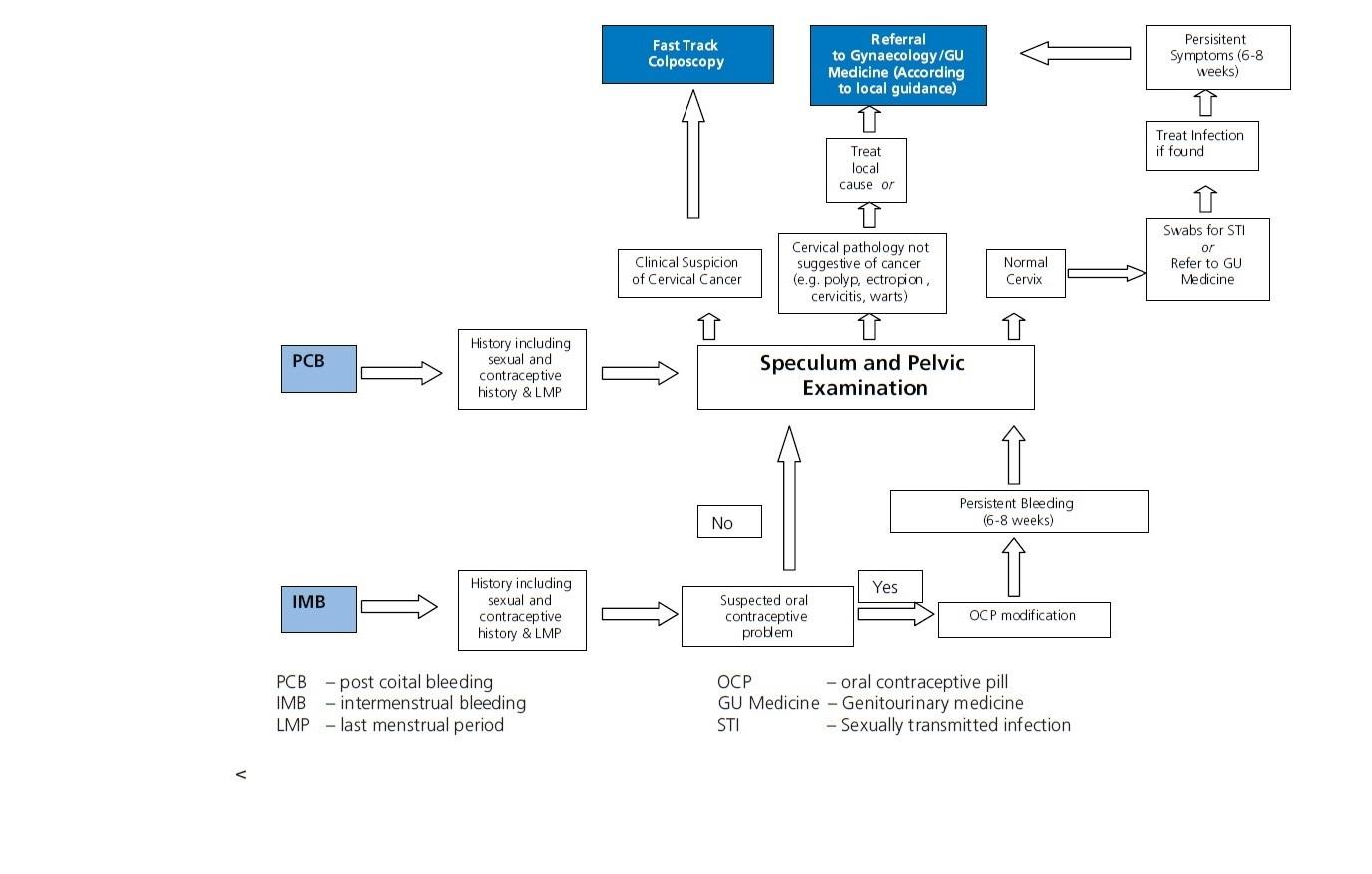Clinical practice guidance for the assessment of young women aged 20-24 with abnormal vaginal bleeding
In June 2009, the Department of Health confirmed that the starting age for cervical screening would remain at 25 years of age
- number of women aged 20-24 years who develop cervical cancer is generally fewer than 50 cases per year and this will fall over the next 10 years as a consequence of the national HPV vaccination programme
By contrast abnormal vaginal bleeding is relatively common in this age group
- been estimated from a general practice dataset in Scotland (unpublished) that post-coital bleeding is reported by around 1 in 600 women aged 20-24 per year
- intermenstrual bleeding is more common than this and it may be that 0.5-1% of women in this age present with abnormal vaginal bleeding each year
- there are around 1.5m women aged 20-24 in England and it could, therefore, be estimated that 7,500 -15,000 women per year will report abnormal vaginal bleeding. In practice the number could be larger than this
An algorithm for the management of abnormal vaginal bleeding in women aged 20-24 years has been developed (1)

Reference:
- Public Health England (October 2015).Re: Population screening update, autumn 2015
Create an account to add page annotations
Add information to this page that would be handy to have on hand during a consultation, such as a web address or phone number. This information will always be displayed when you visit this page